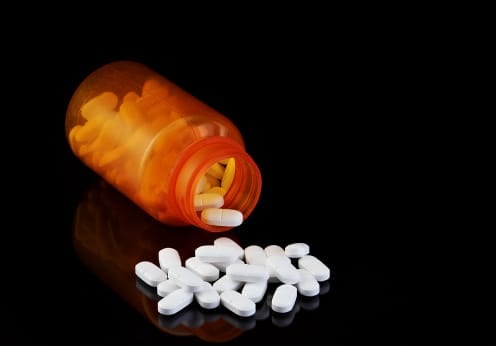In a major policy shift, the federal Food and Drug Administration seeks to place stronger restrictions on a class of prescription painkillers that contain hydrocodone, the highly addictive painkiller that has grown into the most widely prescribed drug in the U.S. The changes are expected to take place as early as next year. The FDA recommends reclassifying Vicodin and other products that contain hydrocodone more restrictively — from Schedule III controlled substances to Schedule II. An example of a current Schedule II drug is OxyContin, another opioid painkiller. They are considered the most addictive, legally prescribed drugs. Schedule I is a classification reserved for illicit substances which are rarely (usually never) used medically, such as LSD, heroin, ecstasy, marijuana and peyote.
The number of Americans overdosing from hydrocodone has been increasing rapidly in recent years, and more than 15,000 now die every year, according to the Centers for Disease Control and Prevention. Hydrocodone is the most frequently prescribed opiate in the United States with nearly 143 million prescriptions for hydrocodone-containing products dispensed in 2012, according to the DEA. Every age group has been affected by the relative ease of hydrocodone availability and the perceived safety of these products by medical prescribers, according to the DEA. Of particular concern is the prevalence of illicit use of hydrocodone among school-aged children. The 2012 Monitoring the Future Survey reports that 1.3 %, 3.0 % and 3.8% of 8th, 10th, and 12th graders, respectively, used Vicodin nonmedically in the last year. A recent study has also shown that individuals who use marijuana may also represent a segment of the population that is more likely to misuse hydrocodone. The research, which was conducted by researchers at Ameritox, shows that individuals who test positive for marijuana are more likely to use prescription drugs. Dr. Janet Woodcock, director of the FDA’s Center for Drug Evaluation and Research, said she expected the new regulations to go into effect in 2014. For years, FDA officials had rejected recommendations from the DEA and others for stronger controls on the drugs, saying the action would create undue hardships for patients. “Each day that passes means rising abuse, and even death, at the hands of hydrocodone-based drugs,” said U.S. Sen. Charles Schumer, who has championed the change in classification. “I’m very pleased that the FDA has heeded my call and will tighten up control of one of the most highly prescribed – and abused – drugs on the market.” The prescription painkillers that are killing Americans are narcotics derived from the opium poppy. The substance from the flower, called opium, that contains active compounds has been used for thousands of years as medication and as a way to get high. The natural compounds, as well as those derived from them, act in the nervous system on certain receptors. The CDC reports that between 1999 and 2010, nearly 48,000 women died from an overdose of prescription painkillers. The number of overdose deaths during that time period represents a 400 percent increase. Compared to the increase in deaths of men for the same reason, 265 percent, the number is staggering. Overdose deaths are not the only statistics addressed in the CDC report. They also show that even more women are going to the emergency room for abusing painkillers. For every woman dying of an overdose, 30 end up in the emergency room. The women most likely to die from an overdose are those between the ages of 45 and 54, while women from 25 to 54 are most likely to receive emergency treatment.Signs and Symptoms
An addiction to hydrocodone causes changes in the person taking the medication. Signs and symptoms of hydrocodone abuse are not always easy to spot because these changes vary from person to person. There are a few common symptoms of hydrocodone abuse that you should look for, including:
- Requesting frequent refills for the drug
- Seeing two or more doctors for additional prescriptions
- Spending time away from other people
- Going through money quickly
- Focusing more on hydrocodone than anything else
- Sudden changes in social activities
- Mood swings

